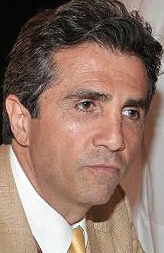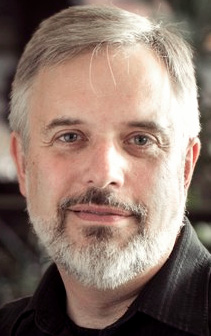

 Few parts of the Domain Name System are filled with such levels of mythology as its root server system. Here I'd like to try and explain what it is all about and ask the question whether the system we have is still adequate, or if it's time to think about some further changes. The namespace of the DNS is a hierarchically structured label space. Each label can have an arbitrary number of immediately descendant labels, and only one immediate parent label.
Few parts of the Domain Name System are filled with such levels of mythology as its root server system. Here I'd like to try and explain what it is all about and ask the question whether the system we have is still adequate, or if it's time to think about some further changes. The namespace of the DNS is a hierarchically structured label space. Each label can have an arbitrary number of immediately descendant labels, and only one immediate parent label.
 While conventional cyber attacks are evolving at breakneck speed, the world is witnessing the rise of a new generation of political, ideological, religious, terror and destruction motivated "Poli-Cyber™" threats. These are attacks perpetrated or inspired by extremists' groups such as ISIS/Daesh, rogue states, national intelligence services and their proxies. They are breaching organizations and governments daily, and no one is immune.
While conventional cyber attacks are evolving at breakneck speed, the world is witnessing the rise of a new generation of political, ideological, religious, terror and destruction motivated "Poli-Cyber™" threats. These are attacks perpetrated or inspired by extremists' groups such as ISIS/Daesh, rogue states, national intelligence services and their proxies. They are breaching organizations and governments daily, and no one is immune.
 Did you know that over 50% of .CZ domains are now signed with DNS Security Extensions (DNSSEC)? Or that over 2.5 million .NL domains and almost 1 million .BR domains are now DNSSEC-signed? Were you aware that around 80% of DNS clients are now requesting DNSSEC signatures in their DNS queries? And did you know that over 100,000 email domains are using DNSSEC and DANE to enable secure email between servers?
Did you know that over 50% of .CZ domains are now signed with DNS Security Extensions (DNSSEC)? Or that over 2.5 million .NL domains and almost 1 million .BR domains are now DNSSEC-signed? Were you aware that around 80% of DNS clients are now requesting DNSSEC signatures in their DNS queries? And did you know that over 100,000 email domains are using DNSSEC and DANE to enable secure email between servers?
 Do you have new information about DNSSEC or DANE that you would like to share with the wider community? Have you created a new tool or service? Have you found a way to use DNSSEC to secure some other service? Do you have new statistics about the growth or usage of DNSSEC, DANE or other related technology? If so, and if you will be in Copenhagen, Denmark, for ICANN 58 in March 2017 (or can get there), please consider submitting a proposal to speak at the ICANN 58 DNSSEC Workshop!
Do you have new information about DNSSEC or DANE that you would like to share with the wider community? Have you created a new tool or service? Have you found a way to use DNSSEC to secure some other service? Do you have new statistics about the growth or usage of DNSSEC, DANE or other related technology? If so, and if you will be in Copenhagen, Denmark, for ICANN 58 in March 2017 (or can get there), please consider submitting a proposal to speak at the ICANN 58 DNSSEC Workshop!
 Friday marks the beginning of the ICANN 57 meeting in Hyderabad, India. As per usual there will be a range of activities related to DNSSEC or DANE. Two of the sessions will be streamed live and will be recorded for later viewing. Here is what is happening. All times below are India Standard Time (IST), which is UTC+05:30. Please do join us for a great set of sessions about how we can work together to make the DNS more secure and trusted!
Friday marks the beginning of the ICANN 57 meeting in Hyderabad, India. As per usual there will be a range of activities related to DNSSEC or DANE. Two of the sessions will be streamed live and will be recorded for later viewing. Here is what is happening. All times below are India Standard Time (IST), which is UTC+05:30. Please do join us for a great set of sessions about how we can work together to make the DNS more secure and trusted!
 The recent attacks on the DNS infrastructure operated by Dyn in October 2016 have generated a lot of comment in recent days. Indeed, it's not often that the DNS itself has been prominent in the mainstream of news commentary, and in some ways, this DNS DDOS prominence is for all the wrong reasons! I'd like to speculate a bit on what this attack means for the DNS and what we could do to mitigate the recurrence of such attacks.
The recent attacks on the DNS infrastructure operated by Dyn in October 2016 have generated a lot of comment in recent days. Indeed, it's not often that the DNS itself has been prominent in the mainstream of news commentary, and in some ways, this DNS DDOS prominence is for all the wrong reasons! I'd like to speculate a bit on what this attack means for the DNS and what we could do to mitigate the recurrence of such attacks.
Last week, millions of infected devices directed Internet traffic to DNS service provider Dyn, resulting in a Distributed Denial of Service (DDoS) attack that took down major websites including Twitter, Amazon, Netflix, and more. In a recent blog post, security expert Bruce Schneier argued that "someone has been probing the defences of the companies that run critical pieces of the Internet". This attack seems to be part of that trend. This disruption begs the question: Can we trust the Internet?
 A few weeks ago, on Oct. 1, 2016, Verisign successfully doubled the size of the cryptographic key that generates DNSSEC signatures for the internet's root zone. With this change, root zone DNS responses can be fully validated using 2048-bit RSA keys. This project involved work by numerous people within Verisign, as well as collaborations with ICANN, Internet Assigned Numbers Authority (IANA) and National Telecommunications and Information Administration (NTIA).
A few weeks ago, on Oct. 1, 2016, Verisign successfully doubled the size of the cryptographic key that generates DNSSEC signatures for the internet's root zone. With this change, root zone DNS responses can be fully validated using 2048-bit RSA keys. This project involved work by numerous people within Verisign, as well as collaborations with ICANN, Internet Assigned Numbers Authority (IANA) and National Telecommunications and Information Administration (NTIA).
 A few months ago I published a blog post about Verisign's plans to increase the strength of the Zone Signing Key (ZSK) for the root zone. I'm pleased to provide this update that we have started the process to pre-publish a 2048-bit ZSK in the root zone for the first time on Sept. 20. Following that, we will publish root zones with the larger key on Oct. 1, 2016.
A few months ago I published a blog post about Verisign's plans to increase the strength of the Zone Signing Key (ZSK) for the root zone. I'm pleased to provide this update that we have started the process to pre-publish a 2048-bit ZSK in the root zone for the first time on Sept. 20. Following that, we will publish root zones with the larger key on Oct. 1, 2016.
 Of all the patently false and ridiculous articles written this month about the obscure IANA transition which has become an issue of leverage in the partisan debate over funding the USG via a Continuing Resolution, this nonsense by Theresa Payton is the most egregiously false and outlandish. As such, it demands a critical, nearly line by line response.
Of all the patently false and ridiculous articles written this month about the obscure IANA transition which has become an issue of leverage in the partisan debate over funding the USG via a Continuing Resolution, this nonsense by Theresa Payton is the most egregiously false and outlandish. As such, it demands a critical, nearly line by line response.